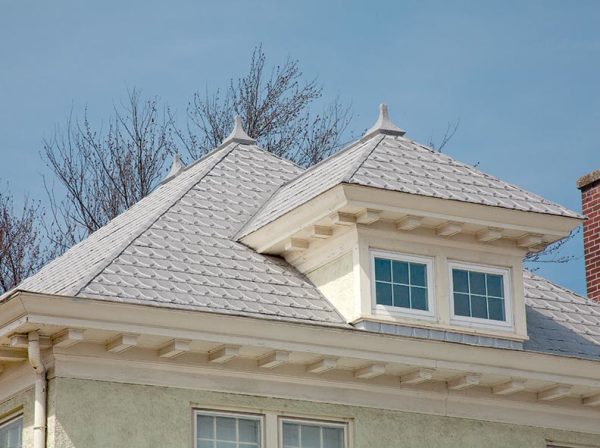Historic buildings hold a significant place in our heritage, reflecting the rich architectural styles and craftsmanship of the past. When it comes to preserving these structures, choosing the right roofing material is crucial. Historic metal roofing offers a perfect blend of aesthetics and durability, allowing us to maintain the authenticity of these buildings while ensuring their long-term protection. In this article, we will explore the importance of historic metal roofing and how it contributes to the preservation of our architectural heritage.

The Significance of Historic Metal Roofing: Retaining Authenticity
Historic metal roofing plays a vital role in preserving the authenticity of heritage buildings. These roofs often feature materials such as copper, zinc, or tin, which were commonly used during the time the structure was built. By opting for historic metal roofing, building owners can maintain the architectural integrity and historical accuracy of their properties. The unique characteristics and patina that develop over time further enhance the charm and story of these buildings, adding to their cultural and historical value.
Durability and Longevity: Protecting Our Heritage
One of the key advantages of historic metal roofing is its exceptional durability and longevity. Many historic metal roofs have withstood the test of time, enduring for over a century. Metal roofing materials are known for their resistance to fire, rot, and insect damage, making them an ideal choice for long-term protection. When properly maintained, historic metal roofs can continue to safeguard the structure for future generations, reducing the need for frequent replacements and preserving the original architectural elements.
Authentic Reproduction: Honoring the Past
In cases where a historic metal roof requires replacement or repair, it is essential to prioritize authentic reproduction. Working with skilled craftsmen and heritage roofing specialists ensures that the replacement material and techniques closely resemble the original roof. Attention to detail, including the choice of metal, the pattern of seams, and the surface finish, is crucial to maintain the historical accuracy of the building. Authentic reproduction not only safeguards the structural integrity but also celebrates the craftsmanship of the past.
Balancing Preservation and Modern Technology: Advances in Historic Metal Roofing
While preserving the authenticity of historic buildings is paramount, advancements in technology have also provided new opportunities for historic metal roofing. Modern coatings and treatments can be applied to historic metal roofs, enhancing their longevity and performance without compromising their original appearance. These coatings can protect against corrosion, extend the lifespan of the roof, and improve energy efficiency. When considering maintenance or restoration, it is essential to balance the preservation of historical features with the benefits offered by these innovative solutions.
Conclusion:
Preserving our architectural heritage is a collective responsibility, and historic metal roofing plays a crucial role in this endeavor. By choosing historic metal roofing materials, we can retain the authenticity of these remarkable structures while providing them with the durability and longevity they need. Whether through maintaining the original roof or authentically reproducing it, historic metal roofing honors the craftsmanship and architectural styles of the past. Balancing preservation and modern technology allows us to ensure the continued protection of these historic treasures for future generations to appreciate and cherish.



Leave a Reply